
Otak manusia adalah pusat sistem saraf pada manusia. Letaknya di dalam kepala dan dilindungi oleh tulang tengkorak.
- Subject:
- Education
- Material Type:
- Interactive
- Author:
- Tri Astari
- Date Added:
- 05/03/2022

Otak manusia adalah pusat sistem saraf pada manusia. Letaknya di dalam kepala dan dilindungi oleh tulang tengkorak.
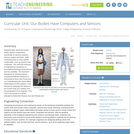
Students learn about the human body's system components, specifically its sensory systems, nervous system and brain, while comparing them to robot system components, such as sensors and computers. The unit's life sciences-to-engineering comparison is accomplished through three lessons and five activities. The important framework of "stimulus-sensor-coordinator-effector-response" is introduced to show how it improves our understanding the cause-effect relationships of both systems. This framework reinforces the theme of the human body as a system from the perspective of an engineer. This unit is the second of a series, intended to follow the Humans Are Like Robots unit.
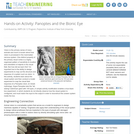
Vision is the primary sense of many animals and much is known about how vision is processed in the mammalian nervous system. One distinct property of the primary visual cortex is a highly organized pattern of sensitivity to location and orientation of objects in the visual field. But how did we learn this? An important tool is the ability to design experiments to map out the structure and response of a system such as vision. In this activity, students learn about the visual system and then conduct a model experiment to map the visual field response of a Panoptes robot. (In Greek mythology, Argus Panoptes was the "all-seeing" watchman giant with 100 eyes.) A simple activity modification enables a true black box experiment, in which students do not directly observe how the visual system is configured, and must match the input to the output in order to reconstruct the unseen system inside the box.

This course provides an introduction to important philosophical questions about the mind, specifically those that are intimately connected with contemporary psychology and neuroscience. Are our concepts innate or are they acquired by experience? And what does it even mean to call a concept ‘innate’? Are ‘mental images’ pictures in the head? Is color in the mind or in the world? Is the mind nothing more than the brain? Can there be a science of consciousness? The course includes guest lectures by philosophers and cognitive scientists.
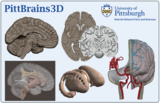
This resource presents multiple digital 3D models of the human brain. These models can be downloaded as stl files and either printed or used in digital form.These models were designed to enrich neuroanatomy instruction. They were designed with undergraduate education in mind, but can be used at multiple levels of instruction.

This resource is a video abstract of a research paper created by Research Square on behalf of its authors. It provides a synopsis that's easy to understand, and can be used to introduce the topics it covers to students, researchers, and the general public. The video's transcript is also provided in full, with a portion provided below for preview:
"Glioblastoma multiforme (GBM) is a deadly brain cancer that affects both adults and children. GBM remains mostly incurable because of the nonuniform nature of GBM cells and the numerous mechanisms involved. However, noncoding RNA molecules called circular RNAs (circRNAs) may be valuable targets for GBM treatment, because these molecules can promote or suppress cancer-related processes like cell proliferation, cell death, invasion, and chemoresistance. For example, various circRNAs can regulate pathways that are dysregulated in GBM, such as the PI3K/Akt/mTOR, Wnt/β-catenin, and MAPK pathways. Other circRNAs can positively or negatively regulate tumor blood supply establishment and metastasis to influence GBM progression. CircRNAs are stable and present in numerous body fluids, and some are associated with tumor grade and outcomes, making them promising biomarkers. In addition, silencing or overexpressing certain circRNAs in patients may help treat GBM or improve patients’ responses to other treatments..."
The rest of the transcript, along with a link to the research itself, is available on the resource itself.
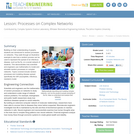
Building on their understanding of graphs, students are introduced to random processes on networks. They walk through an illustrative example to see how a random process can be used to represent the spread of an infectious disease, such as the flu, on a social network of students. This demonstrates how scientists and engineers use mathematics to model and simulate random processes on complex networks. Topics covered include random processes and modeling disease spread, specifically the SIR (susceptible, infectious, resistant) model.

This resource is a video abstract of a research paper created by Research Square on behalf of its authors. It provides a synopsis that's easy to understand, and can be used to introduce the topics it covers to students, researchers, and the general public. The video's transcript is also provided in full, with a portion provided below for preview:
"For nearly 25 years, scientists have known of the neuroprotective properties associated with the protein called prosaposin. But exactly how prosaposin exerts these effects has been a matter of debate. Initial research using a neuroactive fragment of the protein, called TX14(A), identified two closely related receptors thought to mediate the actions of prosaposin. But this work was later challenged. Now, an international team of scientists has reported strong evidence that prosaposin does activate these receptors, which may help pave the way for a new class of neuroprotective drugs. Uncertainty over the status of prosaposin as an endogenous ligand for GPR37L1 and GPR37 has stemmed from the use of widely varying experimental conditions. The main inconsistency with past work was the use of cell lines derived from ovary, kidney or yeast to study the receptors. But this creates a physiological mismatch, as the receptors are almost exclusively expressed in the brain..."
The rest of the transcript, along with a link to the research itself, is available on the resource itself.

This resource is a video abstract of a research paper created by Research Square on behalf of its authors. It provides a synopsis that's easy to understand, and can be used to introduce the topics it covers to students, researchers, and the general public. The video's transcript is also provided in full, with a portion provided below for preview:
"People often take probiotics to supplement the community of microbes living in their gut and maintain their digestive health. But can gut microbes also have an important effect on the brain? New evidence indicates that they can, with possible key roles in neurologic disorders such as Alzheimer’s disease, Parkinson’s disease, and amyotrophic lateral sclerosis (ALS). While treatment with antibiotics to manipulate the gut microbiota has been shown to improve neurologic symptoms, it can worsen them in SOD1 mice, which are often used to study ALS. To better understand the role of gut microbes in ALS, scientists either depleted the gut microbiota of SOD1 mice with antibiotics or augmented it by housing SOD1 with non-SOD1 mice to encourage microbial transfer. The antibiotic treatment decreased motor function and survival in the SOD1 mice, while cohabitation with non-SOD1 mice had no effect..."
The rest of the transcript, along with a link to the research itself, is available on the resource itself.
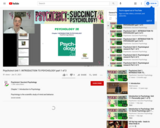
Intern Prescot Nelson at Succinct Psychology (Psychcinct), under the guidance of professor Daniel Reynolds, created the entire course series for the Psych2e Openstax textbook. We are allowing everyone to share and embed this resource.

Psychology is designed to meet scope and sequence requirements for the single-semester introduction to psychology course. The book offers a comprehensive treatment of core concepts, grounded in both classic studies and current and emerging research. The text also includes coverage of the DSM-5 in examinations of psychological disorders. Psychology incorporates discussions that reflect the diversity within the discipline, as well as the diversity of cultures and communities across the globe.Senior Contributing AuthorsRose M. Spielman, Formerly of Quinnipiac UniversityContributing AuthorsKathryn Dumper, Bainbridge State CollegeWilliam Jenkins, Mercer UniversityArlene Lacombe, Saint Joseph's UniversityMarilyn Lovett, Livingstone CollegeMarion Perlmutter, University of Michigan

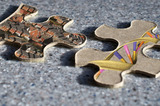
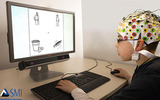
By the end of this section, you will be able to:Explain the functions of the spinal cordIdentify the hemispheres and lobes of the brainDescribe the types of techniques available to clinicians and researchers to image or scan the brain
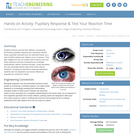
Students observe and test their reflexes, including the (involuntary) pupillary response and (voluntary) reaction times using their dominant and non-dominant hands, as a way to further explore how reflexes occur in humans. They gain insights into how our bodies react to stimuli, and how some reactions and body movements are controlled automatically, without conscious thought. Using information from the associated lesson about how robots react to situations, including the stimulus-to-response framework, students see how engineers use human reflexes as examples for controls for robots.

This resource is a video abstract of a research paper created by Research Square on behalf of its authors. It provides a synopsis that's easy to understand, and can be used to introduce the topics it covers to students, researchers, and the general public. The video's transcript is also provided in full, with a portion provided below for preview:
"Quantum materials are opening up a realm of possibilities in materials research. Among the best known examples are superconductivity and quantum computing. But that’s only the beginning. The same properties that make these materials unique are also enabling researchers to demystify the inner workings of the human brain. So what makes quantum materials well suited for this purpose? Unlike the free-flowing electrons in ordinary conductors or semiconductors, electrons in quantum materials show correlated behavior. That in itself has been the focus of intense physics research. But the upshot for brain research is tunable electronic behavior that can mimic the electronic signaling of neurons and the synapses between them. Most importantly, quantum materials can simulate synaptic plasticity. Plasticity is the biological ability that makes learning and memory formation possible. It’s all about timing. Connections between neurons that fire within a short, milliseconds-long time window grow stronger..."
The rest of the transcript, along with a link to the research itself, is available on the resource itself.
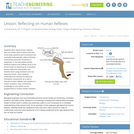
Students learn about human reflexes, how our bodies react to stimuli and how some body reactions and movements are controlled automatically, without thinking consciously about the movement or responses. In the associated activity, students explore how reflexes work in the human body by observing an involuntary human reflex and testing their own reaction times using dominant and non-dominant hands. Once students understand the stimulus-to-response framework components as a way to describe human reflexes and reactions in certain situations, they connect this knowledge to how robots can be programmed to conduct similar reactions.

This series of research talks by members of the Department of Brain and Cognitive Sciences introduces students to different approaches to the study of the brain and mind.
Topics include:
From Neurons to Neural Networks
Prefrontal Cortex and the Neural Basis of Cognitive Control
Hippocampal Memory Formation and the Role of Sleep
The Formation of Internal Modes for Learning Motor Skills
Look and See: How the Brain Selects Objects and Directs the Eyes
How the Brain Wires Itself
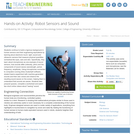
Students continue to build a rigorous background in human sensors and their engineering equivalents by learning about electronic touch, light, sound and ultrasonic sensors that measure physical quantities somewhat like eyes, ears and skin. Specifically, they learn about microphones as one example of sound sensors, how sounds differ (intensity, pitch) and the components of sound waves (wavelength, period, frequency, amplitude). Using microphones connected to computers running (free) Audacity® software, student teams experiment with machine-generated sounds and their own voices and observe the resulting sound waves on the screen, helping them to understand that sounds are waves. Students take pre/post quizzes, complete a worksheet and watch two short online videos about "seeing" sound.

This resource is a video abstract of a research paper created by Research Square on behalf of its authors. It provides a synopsis that's easy to understand, and can be used to introduce the topics it covers to students, researchers, and the general public. The video's transcript is also provided in full, with a portion provided below for preview:
"How humans lose consciousness under anesthesia is a bit of a mystery, but that’s especially true in the case of young infants. Scientists have known that in adults, fast alpha-wave frequencies in the electroencephalogram, or EEG, appear when someone undergoes anesthesia and loses consciousness. But that doesn’t happen in infants younger than about 4 months. So, how do young infants lose consciousness? Because awake infants do show slow delta-wave frequencies, a team at the University of Cambridge and Harvard Medical School and Boston Children’s Hospital decided to investigate those waves. Now, in a new article in the journal Anesthesiology, the researchers report that infants lost slow-wave synchronization—or “functional connectivity”—between the frontal and parietal regions of their brains when they underwent anesthesia. There is evidence that during anesthesia, the adult brain reorganizes itself into a less complex configuration with more segregation between functional systems..."
The rest of the transcript, along with a link to the research itself, is available on the resource itself.